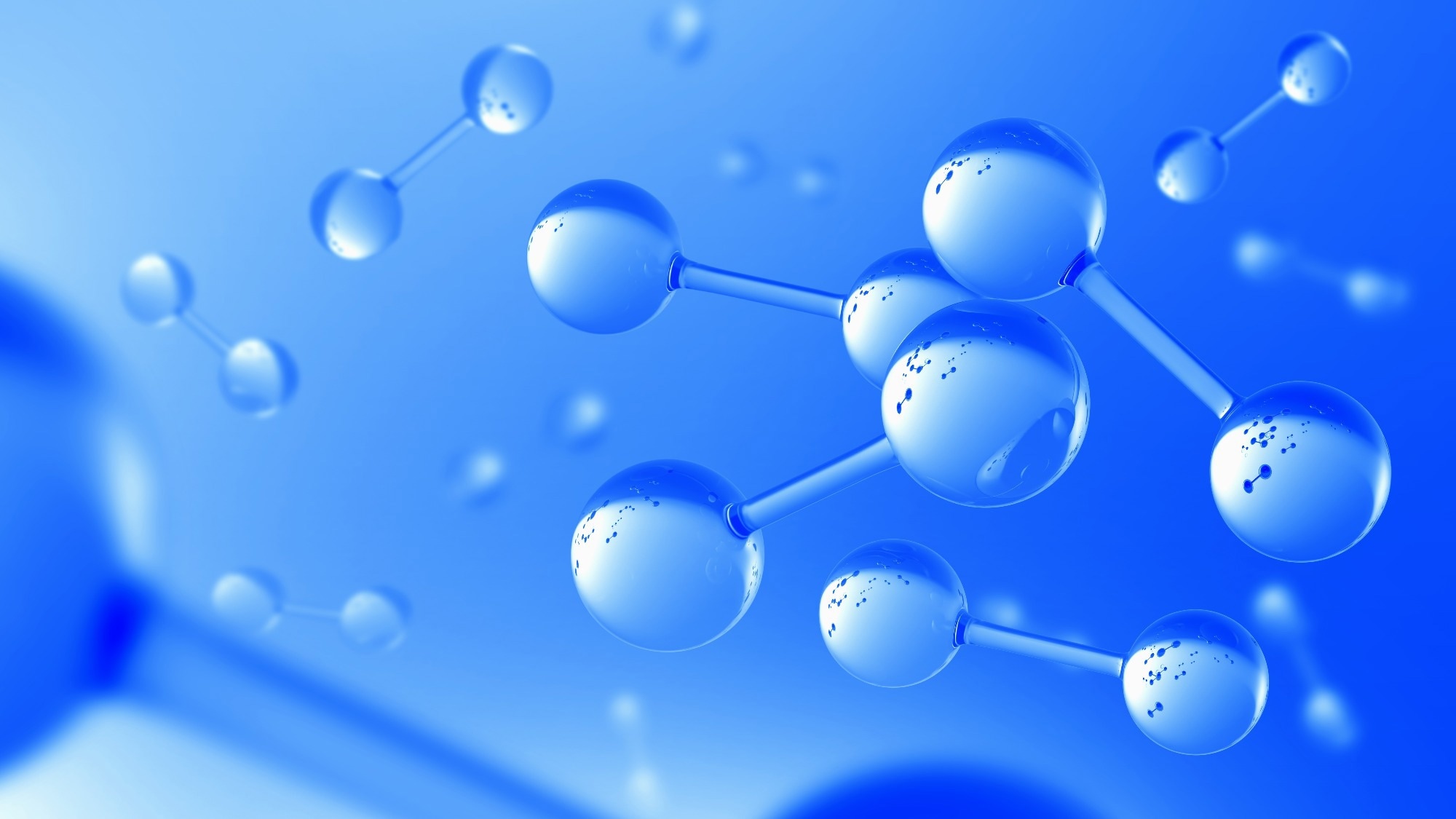A recent study in Advanced Materials Interfaces examined γ’-Fe₄N nitride layers, formed on iron, as a potential barrier against hydrogen permeation.
Using a simple gas nitriding process at 570 °C, researchers produced a thin, pure γ’ layer. Advanced microscopy, hydrogen diffusion testing, and density functional theory (DFT) modeling revealed that this layer significantly reduces hydrogen uptake.

Image Credit: FOTOGRIN/Shutterstock.com
Background
Hydrogen is both an opportunity and a challenge. While it’s a promising sustainable energy carrier, its small atomic size makes detection and control difficult. More critically, hydrogen can diffuse into metallic microstructures, leading to embrittlement and catastrophic mechanical failure.
Barrier coatings and getter layers offer a solution by limiting hydrogen ingress. Nitride surface layers, in particular, can reduce hydrogen permeability in iron-based materials. However, these approaches are rarely implemented due to limited mechanistic understanding and scalability challenges.
To address this, the present study employed an economical gas nitriding technique using a controlled ammonia-hydrogen mixture to form a continuous γ’-Fe4N layer on pure α-Fe.
Methods
Preliminary experiments were performed to optimize nitridation parameters using ammonia-based reduction of iron ores. Industrial hematite pellets were exposed to ammonia gas at 700 °C for two hours in a thermogravimetric analysis (TGA) setup, reducing them to iron.
The resulting samples were characterized using X-ray diffraction (XRD) and electron backscatter diffraction (EBSD) to confirm the formation of γ’-Fe4N nitride.
Subsequently, nitriding was conducted on a pure polycrystalline α-iron plate (100 x 100 x 1 mm). The plate was first treated in a thermobalance reactor to remove surface oxides at 570 °C under hydrogen. A controlled mixture of ammonia and hydrogen was then introduced to the chamber to nitride the surface at 570 °C, following a Floe-like process. The resulting material was named Fe4N@Fe.
The Fe4N@Fe sample was analyzed using scanning electron microscopy (SEM), XRD, and atom probe tomography (APT). Hydrogen permeation tests were carried out to evaluate effective hydrogen diffusivity, steady-state flux, and subsurface hydrogen concentration, comparing the Fe4N@Fe sample with a reference α-iron sample.
Spin-polarized DFT calculations were performed using a plane-wave basis set and optimized norm-conserving Vanderbilt pseudopotentials, within the Quantum ESPRESSO software package. The relative stability of γ’-Fe4N (001) surface structures with both Fe-rich and N-rich terminations was evaluated via an ab initio thermodynamic approach.
Results and Discussion
XRD analysis confirmed the formation of the anisotropic γ’-Fe4N phase in the Fe4N@Fe sample. SEM imaging showed uniform, plate-like grains across the α-Fe foil surface.
The nitrided region had no submicron-sized pores or cracks at the interface, indicating the foil’s complete sealing with γ’-Fe4N. The grain size measurements via EBSD also indicated no delamination between the two material phases.
APT analysis revealed an iso-composition surface of Fe4N@Fe, highlighting the interface between α-iron and γ’-Fe4N phases. The hydrogen content in γ’-Fe4N was 2 to 3 orders of magnitude lower than that in α-Fe. Additionally, H-permeation curves demonstrated that the current increased within 20 seconds for the reference α-iron foil, and reached saturation after 120 seconds. The effective hydrogen diffusivity of pure iron was 2.16 × 10−9 m2 s−1.
Alternatively, for the Fe4N-grown sample, no increase in current was measured until 300 seconds of operation, indicating low hydrogen diffusion, with saturation after 2500 seconds. Therefore, γ’-Fe4N could reduce hydrogen permeability by 20 times at room temperature with a film thickness of ≈5 µm.
The effective hydrogen diffusivity in the γ’-Fe4N layer was 8.8 × 10−13 m2 s−1, ≈4 orders of magnitude less than pure iron.
DFT calculations performed to examine hydrogen-diffusion resistance in γ’-Fe4N, compared with α-Fe, complemented the experimental observations. Notably, the outstanding hydrogen blockage ability of γ’-Fe4N resulted from inhibiting hydrogen diffusion.
Download your PDF copy now!
Conclusion
This study demonstrated that a γ’-Fe4N nitride layer formed on α-iron via a cost-effective gas nitriding process is an effective barrier to hydrogen permeation. The Fe4N@Fe material significantly reduced hydrogen uptake at room temperature, showing strong potential for practical application.
APT analysis revealed a well-defined interface between γ’-Fe4N and α-Fe, indicating suppression of both hydrogen adsorption and absorption at the boundary. Complementary DFT calculations provided a mechanistic explanation for the observed hydrogen-blocking performance: hydrogen penetration into γ’-Fe4N is energetically unfavorable due to stronger surface binding and higher diffusion energy barriers.
These findings highlight the potential of γ’-Fe4N as a scalable, high-performance hydrogen barrier for use in hydrogen-sensitive or embrittlement-prone environments, particularly in iron-based systems.
Journal Reference
Albrecht, A., et al. (2025). An Atomic‐Scale View at γ’‐Fe4N as Hydrogen Barrier Material. Advanced Materials Interfaces. DOI: 10.1002/admi.202500207, https://advanced.onlinelibrary.wiley.com/doi/10.1002/admi.202500207
Disclaimer: The views expressed here are those of the author expressed in their private capacity and do not necessarily represent the views of AZoM.com Limited T/A AZoNetwork the owner and operator of this website. This disclaimer forms part of the Terms and conditions of use of this website.